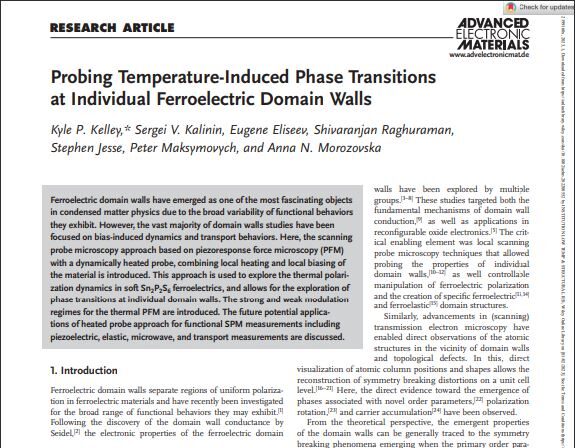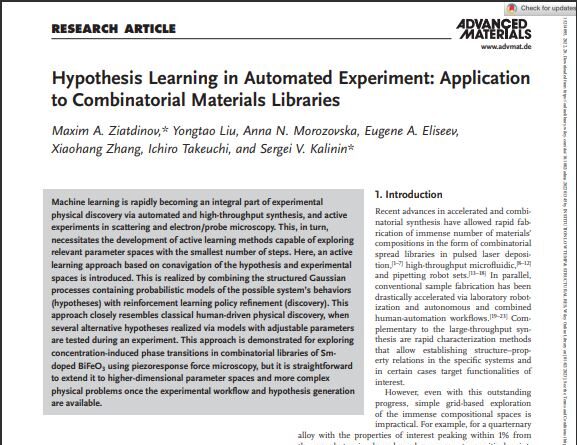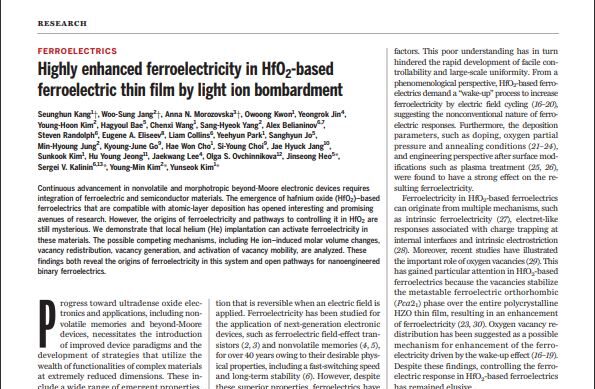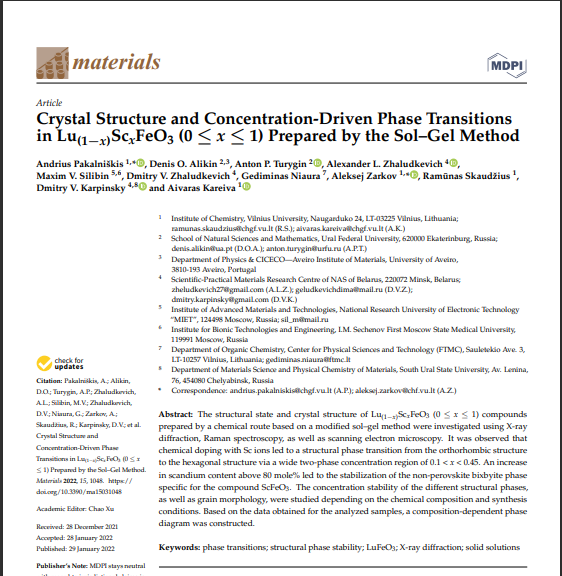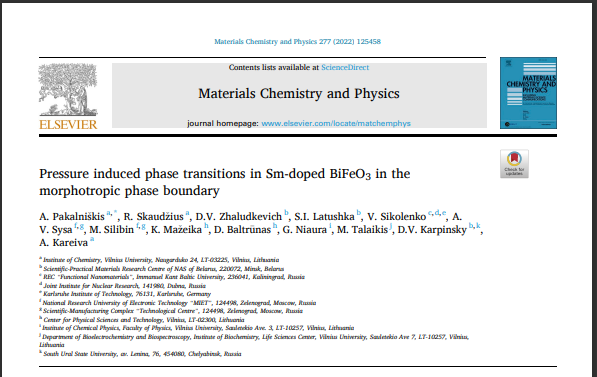Abstract: A correlation between the crystal structure and magnetic properties of system (1-x)BiFeO3 – (x)BaTiO3 with compounds across the morphotropic phase boundary was studied using X-ray and neutron diffraction, magnetometry, and Mössbauer spectroscopy measurements. Increase in the dopants content leads to the structural transition from the rhombohedral phase to the cubic phase via a formation of the two-phase region (0.2 < x < 0.33), wherein the magnetic structure changes from the modulated G-type antiferromagnetic to the collinear antiferromagnetic via a stabilization of the non-collinear antiferromagnetic phase with non-zero remanent magnetization. The value of magnetic moment calculated per iron ion based on the Mössbauer and neutron diffraction data decreases from m ≈ 4.4 μB for the compound with x = 0.25 to m = 3.2 μB for the compound with x = 0.35 testifying a dominance of 3+ oxidation state of the iron ions. Increase in the amount of the cubic phase leads to a reduction in the remanent magnetization from 0.02 emu/g for the compounds with the dominant rhombohedral phase (x < 0.27) down to about 0.001 emu/g for the compounds with dominant cubic structure (x ≥ 0.27). Rapid decrease in the remanent magnetization observed in the compounds across the phase coexistence region points at no direct correlation between the type of structural distortion and non-zero remanent magnetization, while the oxygen octahedra tilting is the key factor determining the presence of non-zero remanent magnetization.
Title: Magnetic properties of BiFeO3 – BaTiO3 ceramics in the morphotropic phase boundary: A role of crystal structure and structural parameters
Authors: D.V. Karpinsky, M.V. Silibin, D.V. Zhaludkevich, S.I. Latushka, A.V. Sysa, V.V. Sikolenko, A.L. Zhaludkevich, V.A. Khomchenko, A. Franz, K. Mazeika, D. Baltrunas, A. Kareiva
DOI: https://doi.org/10.1016/j.jmmm.2021.168409 Journal of Magnetism and Magnetic Materials (2021) 539, 168409
Postprint deposited in the repository: https://arxiv.org/abs/2108.11447

